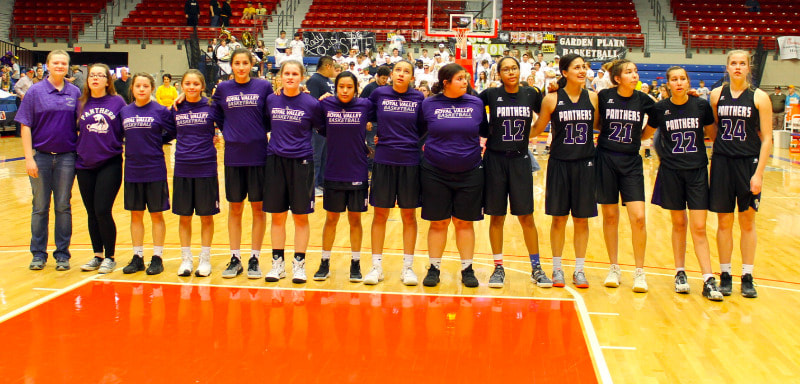|
Planning Your Garden  March is upon us and that means, for American Indian peoples, it’s time for New Years. Traditionally a time for renewal and growth, it’s also a great time for planning and planting! Planning your garden is entirely up to your wants and needs. You can plant perennials (plants that grow back every year on their own) or annuals (plants that must be replanted each year). You can plant flowers, fruits, vegetables or a combination. It’s up to you! You may want to look at traditional farming methods and try them out. That is what we do at the AIHREA Garden on the Johnson County Community College campus. Experiment and see what works best for your area. Ask other gardeners for tips. A three sisters garden (corn, beans, and squash), also called companion planting by non-Natives, is a great way to introduce children and youth to gardening, healthy foods, and traditional stories about those crops. Growing a three sisters garden Where should you put your garden? When it comes to gardening at home you don’t need a lot of land. You can do a lot with a little space. Even if you’re living in an apartment or in the city you can still grow food! No need for fancy tools either, you just have to be creative. Think of some ways that you can use the space that is available to you in the best way possible; do you have a balcony? A patio? There are many ways you can grow food in these spaces. Take a look at these links for some ideas! Small space gardening Gardening with little yard space Container gardening Think small to start because it’s easy to get overwhelmed. It’s better to be proud of a small garden than overwhelmed by a big one. Biodiversity is key in the natural environment and it’s also important in your garden. It helps keep away diseases and pests. Rotating crops from year to year, even in a small garden, will help prevent this as well. You don’t want too much going on for your space either. Know the plants you are planting. Some plants are wind pollinated so you will need more of that plant and in close proximity to one another to have a successful crop. Corn is a commonly planted wind pollinated vegetable. On the same note, make sure you aren’t planting vegetables that need insects to pollinate them indoors or you’re not going to have much luck either. When should you start your garden? This depends on what you are growing. Some plants you can start seeds indoors, while others need to be direct sown in your garden. Also, pay attention to what growing zone you live in. In most climates you can manage at least two growing seasons with the right planning. Depending on the plant, if you learn to start seeds indoors it can give you a jump start on the growing season by 2-3 weeks. Below is a really helpful website for many varieties of flowers and vegetables and times when they can be started both indoors and outdoors to help you with your garden planning. It does not include traditional foods. If you want to try and cultivate some of your traditional foods, you can look at related species on the chart. Or more importantly go to your elders or other knowledgeable people in your tribe and talk to them about when those plants come up and follow their natural cycle. Seed Planting Schedule Seeds You can buy seeds at hardware stores, online, your tribe may have some seeds for traditional heirloom varieties that have been cultivated for centuries, or you can collect seeds from wild plants. Some communities have seed exchanges where growers will trade seeds with one another. They typically may only trade you 20-30 seeds, but it’s plenty to get started and a great opportunity for me to talk to you about seed saving. Seed saving is where you take a few of your flowers, fruits, or vegetables with your most desired traits and you remove and dry the seeds for the following year. This will help you save money for the next year and if you save enough you can take some of them to the next seed exchange. Never plant all of your seeds. Always keep some back in case of crop failure. Crop failure could be due to damage caused by excessive wind, rain, heat, pests, or diseases. If you hold extra seed back you can sometimes plant again or have enough, as long as you keep them cool and dry, to plant the next year. Our ancestors did this because they knew that if they didn’t, it could mean suffering or even starvation. Seed saving “Water is Life” Wherever you put your garden you are going to need access to water. There is no one size fits all to watering. It depends on environment; heat, cold, wind, rain, soil type, slope of terrain, indoors or outdoors, direct or indirect sunlight all play a factor in how much you should water. Different plants have different needs. If you know your plants and their water needs, while keeping in mind weather changes your plants won’t be thirsty! Gardening in the desert Olla irrigation https://www.nativeseeds.org/learn/nss-blog/414-olla Monsoon planting: https://www.nativeseeds.org/learn/nss-blog/283-abcs-of-monsoon Royal Valley High School Girls Basketball Team’s Historic Season
AHIREA would like to recognize the Royal Valley Lady Panthers high school basketball team. The 2017-18 Lady Panthers advanced further than any Royal Valley team ever by making it all the way to the championship game of the Kansas 3A State Basketball Tournament where they finished as runner-up. Royal Valley High School serves the Prairie Band Potawatomi Nation (PBPN) reservation community and the Lady Panthers’ key players this year were PBPN tribal members. Team members also represent the Kickapoo Tribe in Kansas, Iowa Tribe of Kansas and Nebraska, Sisseton Wahpeton Oyate, and the Sac and Fox Tribe of Oklahoma. Congratulations to the team and the Royal Valley community! |
Archives
July 2021
Categories
Never miss any of our monthly updates by entering your email below:
|


 RSS Feed
RSS Feed